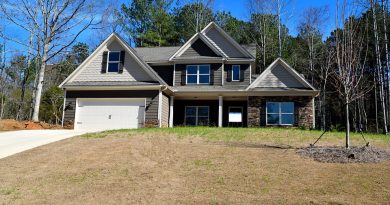Unlocking the Potential: How to Successfully Flip Real Estate in Low-Demand Areas
Unlocking the Potential: How to Successfully Flip Real Estate in Low-Demand Areas
Flipping real estate has long been a popular investment strategy for those looking to make a profit in the housing market. While many investors focus on flipping properties in high-demand areas where the potential for quick sales and high prices is plentiful, there is also a hidden opportunity in low-demand areas. By unlocking the potential in these overlooked neighborhoods, savvy investors can turn a profit and revitalize the community in the process.
Understanding the Market Dynamics in Low-Demand Areas
Before diving into flipping real estate in low-demand areas, it’s important to understand the market dynamics at play. Low-demand areas typically have slower sales, lower property values, and fewer buyers interested in purchasing homes in the neighborhood. This can be a deterrent for many investors who prefer the fast-paced nature of high-demand markets. However, low-demand areas also offer advantages such as lower acquisition costs and less competition from other investors.
Identifying Opportunities for Revitalization
The key to successfully flipping real estate in low-demand areas lies in identifying opportunities for revitalization. Look for neighborhoods that have potential for growth, such as upcoming infrastructure projects, new businesses moving in, or a strong community association working to improve the area. These indicators can signal that the neighborhood is on the upswing and could be a prime candidate for a successful flip.
Another strategy is to target distressed properties in low-demand areas that are in need of renovation. These properties are often priced below market value and can be transformed into attractive, desirable homes with a little TLC. By investing in the renovation of these properties, you can increase their value and appeal to a wider range of buyers.
Developing a Renovation Plan
Once you’ve identified a property in a low-demand area that has potential for revitalization, it’s time to develop a renovation plan. Start by assessing the condition of the property and determining what improvements are needed to make it market-ready. This may include updating the kitchen and bathrooms, replacing outdated fixtures and appliances, repainting the interior and exterior, and landscaping the yard.
When developing your renovation plan, consider the needs and preferences of potential buyers in the area. For example, if the neighborhood has a high number of families, prioritize features such as a fenced yard, playground equipment, or extra storage space. By tailoring your renovations to the needs of the target market, you can increase the appeal of the property and maximize your return on investment.
Marketing and Selling the Property
Once the renovation is complete, it’s time to market and sell the property. In low-demand areas, it’s important to highlight the improvements you’ve made to the home and showcase the potential for growth in the neighborhood. Consider hiring a professional photographer to take high-quality photos of the property and create a compelling listing that emphasizes the key selling points.
To attract buyers in a low-demand market, you may need to be more creative with your marketing strategies. Consider hosting an open house, promoting the property on social media, or partnering with local real estate agents to reach a wider audience. By leveraging multiple channels to market the property, you can increase visibility and generate interest from potential buyers.
Managing the Flip Process
Throughout the flipping process, it’s important to stay organized and keep track of expenses to ensure you stay within budget. Create a timeline for the renovation project and set deadlines for each phase of the work to keep things on track. Be prepared to adapt to unexpected challenges that may arise, such as permit delays, contractor issues, or unforeseen repairs.
As you navigate the flipping process in a low-demand area, remember to be patient and persistent. Success in real estate investing takes time and effort, but the rewards can be well worth it. By unlocking the potential in overlooked neighborhoods, you can not only turn a profit but also make a positive impact on the community by revitalizing properties and creating new opportunities for residents.






